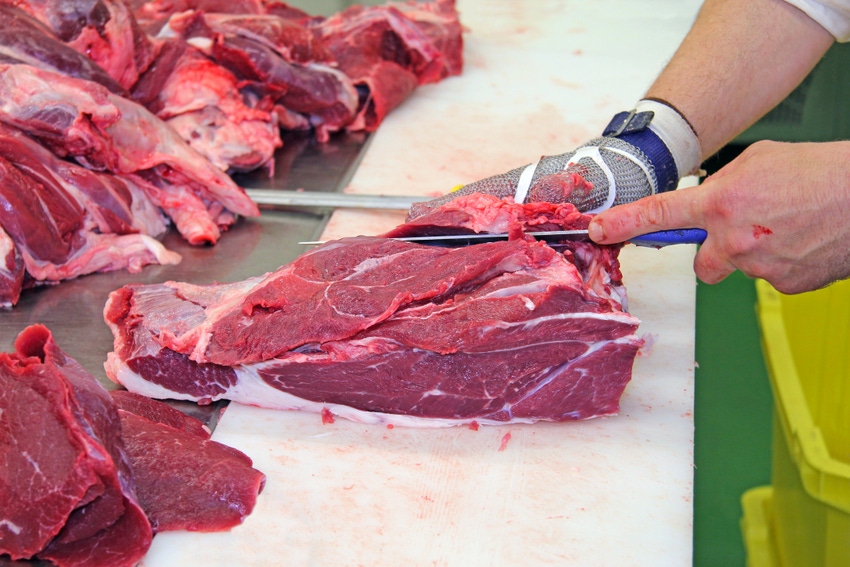
by Mario Parker and Megan Durisin
On any given Monday, America’s biggest supplier of ground beef has 1,000 jobs unfilled, pushing Cargill Inc. to aggressively sweeten the pot on benefits to retain existing workers and hire new ones.
The openings, largely at the meatpacker level, are the result of the Trump administration’s tough stand on immigration and a U.S. unemployment rate reaching decade lows. While the number represents less than 1% of Cargill’s work force, the shortage is slowing output and hindering production of new higher-margin products, executives say.
With global demand for meat rising in a robust economy, Cargill and other industry leaders say the need to expand gives them little choice but to boost worker benefits -- with added pay in some cases, as well as new housing, health care and busing incentives.
Companies are adding plants, but “whether or not they can run those plants efficiently is kind of a jump ball,” Christine McCracken, New York-based analyst for Rabobank International, said by telephone. “What we’re seeing today doesn’t indicate that they’ll be able to fully ramp up production."
"Recruiting and retaining qualified workers in the meat and poultry processing industries was always difficult,” wrote in a note in July. “But it is now a perpetual grind."
In its August earnings call, Pilgrim’s Pride Corp., the second-largest U.S. chicken company, said it expects tight labor conditions “will govern the pace of industry capacity additions in the near to mid-term.”
Meat processing is tough work, with frigid temperatures, sharp equipment, bloody meat, fast-moving conveyor belts, and hours on your feet. In the past, the plants have offered go-to-jobs for new immigrants, but with immigration rules drastically tightened under President Donald Trump that well is running dry. At the same time, the September unemployment rate was 3.7%, the lowest since 1969.
“Incredible number just out,” Trump tweeted on Tuesday, “7,036,000 job openings. Astonishing - it’s all working!”
While consumers haven’t yet been affected with a glut of meat still available, the unfilled jobs are preventing Cargill from producing higher-margin meat products, according to Brian Sikes, the agribusiness giant’s head of protein.
The unfilled jobs mean “we can’t do some value-added activities that we might get paid more for at the end of the line because we don’t have the staff,” Sikes said in an interview at his Wichita, Kansas office.
Being ‘Creative’
Companies are experimenting with automation and robotics. For instance, Cargill has robots that stack boxes. But the progress is slow and expensive and, in the meantime, the company has had to be “creative” with incentives to draw new meatpackers, Sikes said.
While simply paying more is in the mix, it is not all of the equation, according to Sikes.
"We have evaluated our plant labor rates and implemented targeted increases to remain competitive,” he said, though much of the focus has been on quality of life issues in the rural communities where most meatpacking plants are located.
“We’ve done these near-site health clinics to make sure there’s good health-care options for our employees right there in that market, so that we’re a draw,” Sikes added. "We do busing to get people in and pay for their busing, pay for their time.”
In Schuyler, Nebraska, Cargill is working with the governor’s office to secure funding for affordable housing. The company also provides bus service for employees at its Fort Morgan, Colorado-based plant, from Greeley and Denver, 84 miles (135 kilometers) away. In other areas. it’s set up local clinics to provide free medical services.
Tyson Plant
Cargill isn’t alone in its efforts.
Tyson Foods Inc., the nation’s largest meat packer, is building a $300 million chicken plant in Humboldt, Tennessee, and the company is already working with area schools to build needed skills for workers, said Hector Gonzalez, vice president of human resources in the poultry division.
Tyson has raised base wages, according to the company’s fiscal 2017 sustainability report. It implemented varying levels of hourly pay hikes at all poultry plants, moving the average hourly pay between $12.88 and $20.50, depending on the worker’s role. Meanwhile, it’s helping workers with literacy classes and to get their high school equivalency diplomas and citizenship, the report noted.
The labor shortfall isn’t limited to the meat industry.
Keeping Pace
Agricultural employers have been forced to boost wages more rapidly than many industries to keep pace with other sectors like construction, manufacturing and mining, CoBank economist Ben Laine said in an August report. The industry also isn’t immune to America’s current shortage of truck drivers. Fruit and tree nut producers boosted pay by more than 3.5% annually in the decade through 2017.
“It’s still a good time to be a meat processor,” Rabobank’s McCracken said. “The guys that are able to reduce costs because they don’t have the turnover, because they have these great labor practices in place, whether or not it’s higher wages or better benefits or better working conditions, they’re going to win.”
To contact the reporters on this story: Mario Parker in Chicago at [email protected] ;Megan Durisin in Chicago at [email protected]
To contact the editors responsible for this story: James Attwood at [email protected] ;Lynn Thomasson at [email protected] Reg Gale, Millie Munshi
© 2018 Bloomberg L.P
About the Author(s)
You May Also Like




